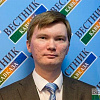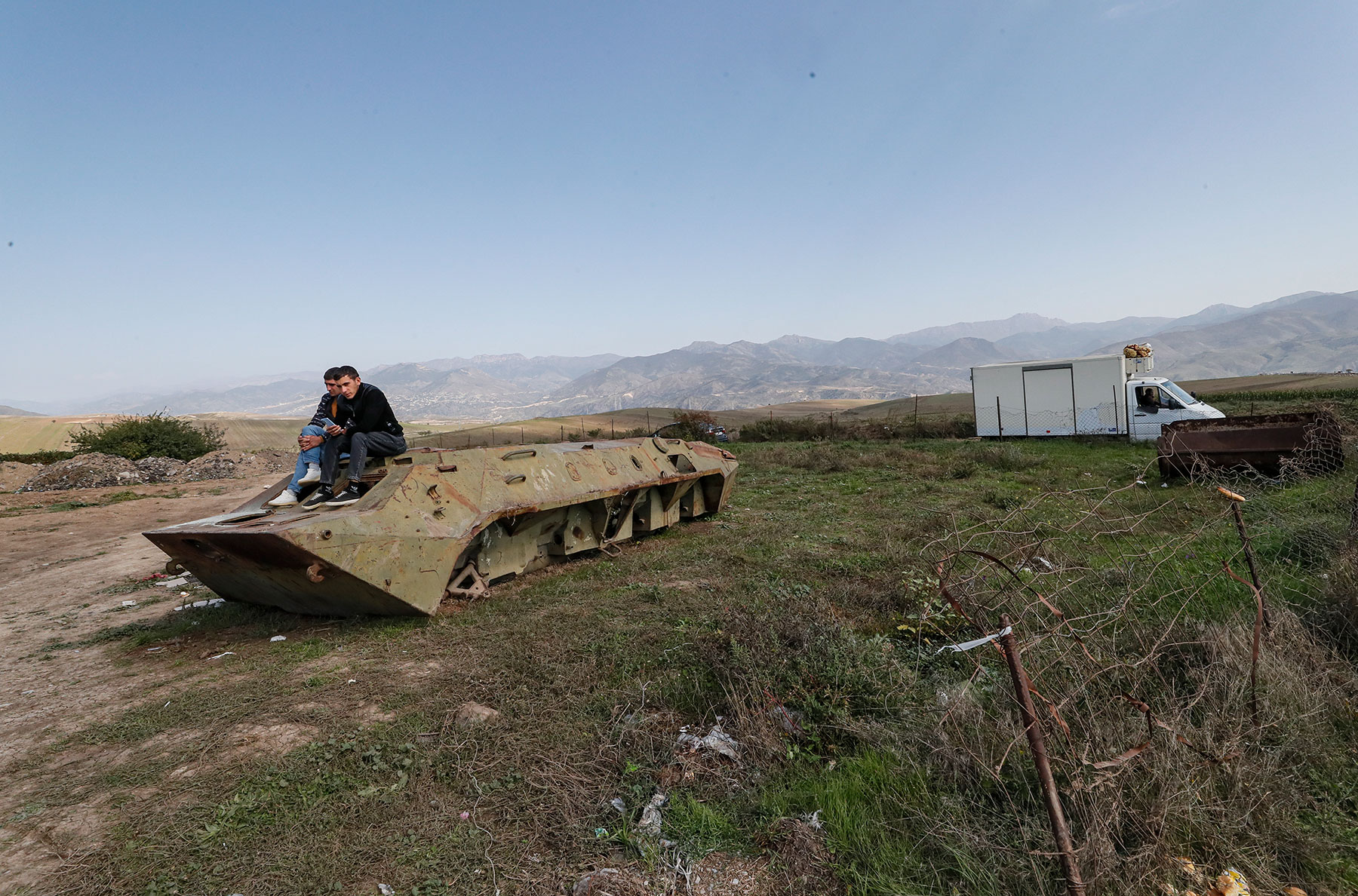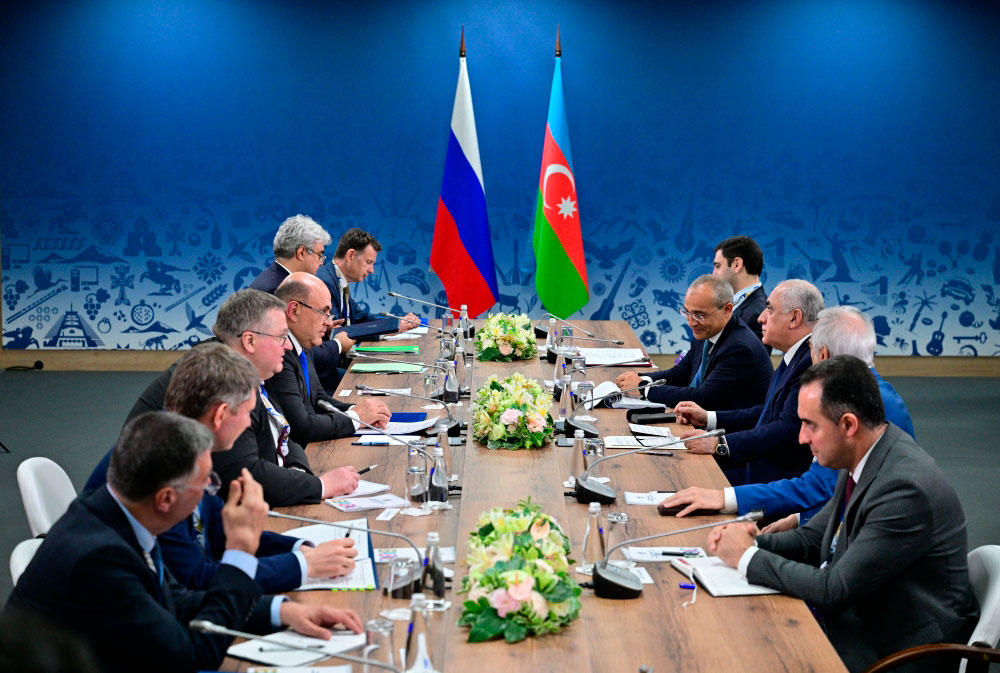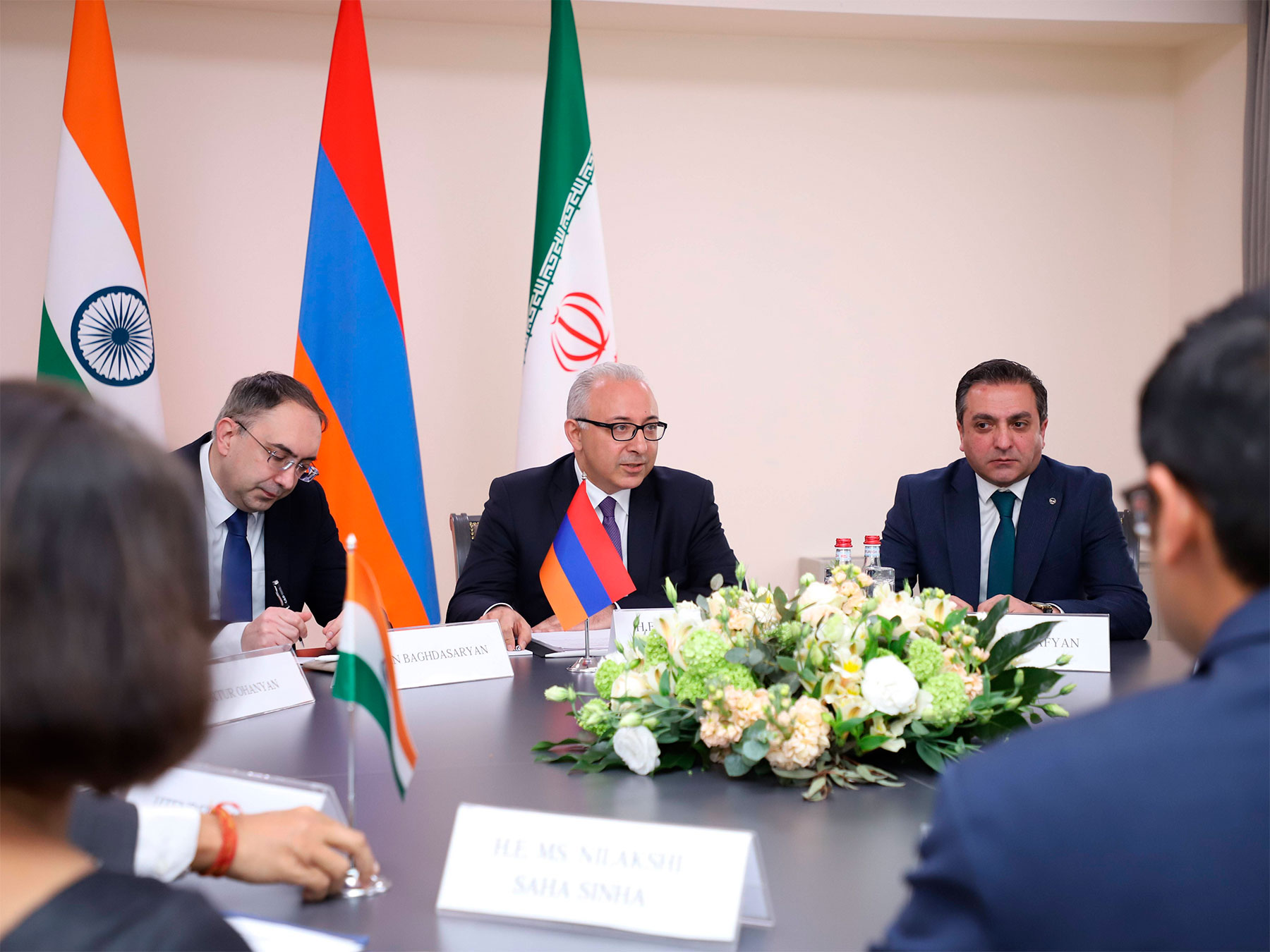The fundamental basis of Armenia’s foreign policy, both under the leadership of Kocharyan-Sargsyan and in the Pashinyan era, has been the confidence in Armenia’s absolute security. This is a seeming paradox, given both recent developments in the South Caucasus as well as Yerevan’s official statements about the existential threats hanging over it. However, many years of daily observation of the rhetoric and actions of the Armenian authorities suggest that the zero point in every foreign policy decision that has been made so far is the premise that “nothing bad will ever happen to the Armenian state.” This idea is pivoted on certain grounds, both rooted in history and based on today’s realities. Since the first days of its newfound independence, the Republic of Armenia has received disproportionate support from several powerhouses at once.
Thanks to the strength of economic ties, Armenia remains in the sphere of Russian influence, no matter how much Paris, Brussels and Washington beckon to it. Armenia’s membership in the EAEU provides an open market in Russia for Armenian goods, capital and, crucially, its labor (every seventh adult citizen of Armenia earns a living in Russia), so this serves as a guarantee of strong relations between the two nations. The West ‘buys’ foreign agent services from Armenia solely to fulfill its tactical tasks of global confrontation with Russia and has no plans to take it on full maintenance.
In the sphere of defense, Armenia will not go too far in dealing with the Russian military because of its desire to maximize benefits. The Republic will continue to ignore the CSTO and will very likely scale down the work of Russian frontier guards on its borders. In the public domain, we may still see the Armenian authorities inventing grievances against Russia and making provocative statements in anticipation of a sharp reaction from Russian politicians, this game being part of the Western “order.” If we leave emotions aside, Russia was, is and will be more necessary for Armenia than the West.
The specifics of Armenian national policy
The fundamental basis of Armenia’s foreign policy, both under the leadership of Kocharyan-Sargsyan and in the Pashinyan era, has been the confidence in Armenia’s absolute security. This is a seeming paradox, given both recent developments in the South Caucasus as well as Yerevan’s official statements about the existential threats hanging over it. However, many years of daily observation of the rhetoric and actions of the Armenian authorities suggest that the zero point in every foreign policy decision that has been made so far is the premise that “nothing bad will ever happen to the Armenian state.”
This idea is pivoted on certain grounds, both rooted in history and based on today’s realities. Since the first days of its newfound independence, the Republic of Armenia has received disproportionate support from several powerhouses at once. This was largely due to the fact that the Armenian Diaspora has been politically active and influential in many parts of the world. This was primarily Russia and the United States (France joining in later). In 1992, when the Turkish-Armenian border was still open and the Karabakh war was just breaking out after the Khojaly massacre, the Armenian lobby in the U.S. Congress secured Amendment 907 to the Freedom Support Act. The amendment prohibited the U.S. government from providing aid to Azerbaijan until Baku unblocks the Armenian-Azerbaijani border and ceases offensive actions, even though the war was fought on the Azerbaijani territory and the offensive was rather carried out by Armenia, which was also blockading Nakhichevan.
We learn about the scale of Armenia’s support by the Armenian diaspora in Russia from Lev Rokhlin’s report dated April 2, 1997: Russian military equipment worth about USD 1 billion was written off as scrap metal and smuggled to Yerevan for subsequent use against Azerbaijan in Karabakh and Eastern Zangezur. And this was only during the first five years of Armenia’s independence and only in the shadow sector of Russian-Armenian contacts. Thus, Armenia was initially provided with both political and military-technical cover from two sides: Russia and the West. Importantly, lobbyists in Russia and in the U.S. were not competing with each other, but working synergistically, striving for the common goal of securing the detachment of Karabakh and Eastern Zangezur from Azerbaijan in favor of Armenia on the ground and legitimizing this in the legal field. Along with independence, Yerevan gained a sense of its own exceptional importance for key international players.
The idea of Armenia’s foreign policy immunity down to a brazen impunity had finally taken shape by 1993, when four UN Security Council resolutions were adopted, all demanding the de-occupation of Azerbaijan’s captured regions. Those documents essentially had no impact on the course of the hostilities, and the UN took no practical steps to compel Armenia to implement the said resolutions after the May 1994 ceasefire. When the OSCE Minsk Group was formed, only one country among the three co-chairs was really interested in the settlement of the Armenian-Azerbaijani conflict—and that was Russia—whereas the U.S. and France sought an indefinite preservation of this hotbed on the Russian borders, which perfectly suited Yerevan. As a result, the Armenian authorities moved from the era of Ter-Petrosyan to the rule of Kocharyan-Sargsyan with the confidence that they could do whatever they wanted and get away with any outrage.
Two more points need to be added here. First, this confidence was reinforced by Iran’s tacit support, a country that sought to make Azerbaijan its satellite and therefore looked for opportunities to weaken Azerbaijani state power (formally, the IRI has always supported Azerbaijan’s territorial integrity and favored an early settlement of the conflict). Tehran and Baku still have difficult relations with regular periods of tension, while the Iranian authorities maintain de facto allied ties with Yerevan. Second, Armenia’s pro-Russian course under Robert Kocharyan and Serzh Sargsyan was largely dictated by the need to maintain the status quo in Karabakh: Russia was the only effective source of arms and other military supplies should hostilities get rekindled, as well as the only intermediary with the capacity to influence the conflict settlement, taking Azerbaijan’s legitimate interests into account. Signing into the membership in the Customs Union and the EAEU and agreeing to any exemptions from the Euro-Association Agreement, President Sargsyan was primarily counting on the prolongation of Karabakh and eastern Zangezur occupation.
Under Kocharyan and Sargsyan, the sense of self-importance among the Armenian elites and the resulting confidence in absolute security and permissiveness did not extend beyond the conflict with Azerbaijan, as there were no other global objectives than retaining 20% of Azerbaijani territories. How pervasive these beliefs were can be seen from the deplorable state of the combat positions of the Armenian forces in Azerbaijan, recorded in numerous photos and video footage made during and after the hostilities of September-November 2020. The Armenian authorities were so sure that Baku would never dare and/or succeed in fighting full-scale battles due to pressure from Yerevan’s partners that they only reinforced the front edge of the occupation zone in case of short-term clashes, never establishing deeply echeloned defenses despite having 26 years at their disposal.
The Pashinyan era
When the post-Soviet transition in Armenia came to a revolutionary halt and the Azerbaijani Armenians were replaced in the leadership by Nikol Pashinyan’s team, it soon became clear that the sense of security harbored by the new elites extended to the country’s entire foreign policy. One of Yerevan’s first foreign policy moves after the 2018 Velvet Revolution was the detention of CSTO Secretary General Yuri Khachaturov on charges of involvement in the March 2008 events, followed by the demand that the Organization’s member states should remove him from office. Moscow’s mild reaction, which sought to maintain allied ties with Yerevan despite the unconstitutional change of power in the Republic (Civil Contract legitimized its power only in the December 2018 elections), reinforced the zero point “nothing bad will ever happen to the Armenian state” in the minds of the Pashinyan team.
The next five years in Armenia’s history convinced President Pashinyan and his associates of the immutable rightness of the zero point. Whatever they did, it would not negatively affect their political future. The Armenian Prime Minister even derived a unique political dominance model “victory through defeat,” which twice disproved what experts forecast: after the Karabakh war ended in a defeat for the Armenian army, the Civil Contract won the majority in the extraordinary parliamentary elections again, despite all the opposition’s attempts to pull the shocked society to its side. And after the full restoration of Azerbaijan’s territorial integrity, liquidation of the separatist project in Khankendi and the mass migration of the Armenian population from Karabakh to Armenia, nothing still happened. If the crowd at least vented its anger for the defeat on Pashinyan’s “right-hand man” Ararat Mirzoyan on November 10, 2020, there were neither public unrest nor significant opposition actions in the fall of 2023 (despite the fact that political analysts had been prophesying the demise of the Armenian authorities for years if the latter refused to support the Karabakh separatists).
From his predecessors and political enemies, Kocharyan and Sargsyan, Nikol Pashinyan not only adopted the attitude that “the Armenian authorities can do whatever they want and get away with it,” but also proved it by resorting to the most radical methods that might cost the rulers of other nations their political career and even life. Each successive failure of Armenia’s traditional foreign policy gave Yerevan more and more leeway. Forcing Armenia to peace and closing the “Karabakh issue,” implemented by Baku, played into the hands of Pashinyan as he easily recognized the territorial integrity of Azerbaijan, since with the completion of Miatsum that stretched over three years, Armenian-Azerbaijani relations moved to back burner for him, becoming instrumental in approaching new strategic tasks. While prior to September 2023, the Armenian head of state had worked to a greater extent on minimizing the risks of eliminating the heavy military-political legacy of the Kocharyan-Sargsyan era, now that peace has prevailed in South Caucasus for the common benefit of the regional states, he has set to recalibrating Armenia’s policy to suit his own tastes.
When analyzing the outlook for Russian-Armenian relations, it is important to bear in mind that Nikol Pashinyan will stay in the leadership of the Republic of Armenia for a long time. He is a young politician under 50 in a non-competitive political environment; his only rivals are the elderly politicians like Kocharyan and Sargsyan who were overthrown in 2018 and failed to take advantage of Pashinyan’s numerous blunders in 2020-2023. We see the Georgian pattern in Armenia: a moderate ruling party (Georgian Dream/Civil Contract) and the radical opposition of the previous leadership (United National Movement/Armenia and Honor blocs), which, in the absence of any third force, leaves citizens with no choice but to vote against the return of the radicals, no matter how badly the moderate leadership performs. Pashinyan is quite capable of holding on to power in the Republic for another 20 years, even with minimal reasonableness in governing the state, so the “Pashinyan era” is not just a nice name but a statement of new, post-conflict realities in Armenia’s history.
Pro-Moscow proclivity despite the seemingly pro-Western stance
So, what does Pashinyan’s Yerevan, convinced of its own invulnerability, want in 2024? It wants to capitalize on its victory over the Armenian past, which includes the state of war with Azerbaijan; the separatist project in Karabakh; the false winner complex; the pro-Russian course of presidents Kocharyan and Sargsyan.
With the irrevocable defeat in the Karabakh war, Armenia achieved the appeasement of Azerbaijan. In their public statements, Nikol Pashinyan and other Armenian politicians tend to repeat the mantra about Baku’s impending attack, even if well aware that Azerbaijan has no such intentions. Armenia’s security is already ensured, regardless of how strange these words may sound today. Armenia is not threatened by any of its neighbors: its relations with Georgia and Iran have not changed, Turkey is simply indifferent, and Azerbaijan has solved all fundamental problems and no longer needs to resort to force. Baku agrees to coexist with Yerevan in the new status quo, without a peace treaty and with the Armenian route in the Zangezur corridor.
The collapse of Miatsum freed Armenia from the need to zero in on one goal, which is both costly and fruitless. It is no longer necessary to finance either the troops or separatist structures in Karabakh (there are problems with the settlement of Karabakh Armenians and migrants returning from Azerbaijan, but the Armenian authorities have already found ways to leverage them to their own advantage). Metaphorically speaking, Yerevan, as one of the contractors of the Great Armenia dream, went through bankruptcy, and the Republic of Armenia now owes nothing to the Armenian Diaspora as the customer. The Diaspora surely begs to differ and does not give up on either the idea of revenge in the Karabakh war or on its hopes for re-occupation of Azerbaijani territories, but Nikol Pashinyan’s team considers its informal debts to foreign citizens of Armenian origin to be written off.
By getting rid of the ‘victorious nation’ complex, Armenia could consolidate the classic ‘victim nation’ complex, which had previously been at variance with the occupation of Azerbaijani territories as well as a full set of crimes against humanity committed on the onset of the Karabakh war. Pashinyan has a convenient opportunity to distance himself from the atrocities of the Kocharyan-Sargsyan Karabakh faction and denounce the crimes. Pashinyan may well say, on the one hand, that the new Yerevan bears no responsibility for the actions of its predecessors, and on the other hand, that Armenia is a small, weak, poor, war-torn and migrant-ridden nation in dire need of all possible assistance packages. For the sake of the victim image, the Armenian authorities are even ready to maintain the blockade of their borders.
Being actually safe and secure, but portraying itself as a regional “damsel in distress,” the Armenia of Pashinyan’s era can comfortably offer geopolitical services to anyone willing to buy them. This is where capitalizing on the optionality of the pro-Russian course begins. Specialists rightly point out that Pashinyan is linked to the Armenian diaspora in the United States and France and is generally characterized by pro-Western aspirations combined with a lack of meaningful personal contacts with Moscow and Russian Armenians. But it is not Pashinyan’s love for all things Western that plays a more important role in Armenia visibly drifting away from Russia, but rather the very potential for weakening Russian-Armenian ties after the forceful resolution of the Armenian-Azerbaijani conflict, which surely coupled with the zero point of Armenia’s foreign policy decisions.
Armenia no longer has the need to compete with Azerbaijan for the Russian policy efforts in South Caucasus, while its services as an agent of foreign influence in the region have seen a sharp increase in demand recently from ‘buyers’ such as France, the EU and the United States. From Moscow, Yerevan has already received the most of what it could give in all spheres, and it is currently responding to offers to sell its loyalty from other nations promising Armenia something on top of the Russian resources and benefits. In fact, we see quite common diversification of foreign policy relations, but the situation is predictably aggravated both by Yerevan’s choice of new partners and by the way Pashinyan’s team fulfills Western orders. At the height of Russia’s confrontation with the West, Russia’s ally demonstrably reduces contacts with the CSTO, hosts European security forces, receives French military equipment. And all this is happening in the backdrop of a harsh anti-Russian campaign in the Armenian media. Instead of diversification, even the naked eye can discern a split-up here.
When assessing the current state of Russian-Armenian relations, it is useful to rememer the differences in the vision of Yerevan and Moscow. From the standpoint of the Armenian authorities, nothing special is happening: anti-Russian tendencies existed among the Armenian elites long before, and there is nothing to restrain them now, while they are just taking whatever is given to them on the Western direction. Russia’s rejection of the Armenian authorities playing along with President Emmanuel Macron is taken note of, but not fully realized in Yerevan. Thus, due to different worldviews embraced by a global power and by a small regional state, their dialogue is getting strained: Russia cannot accept the gradual drifting of its long-time ally into the enemy camp, while Armenia cannot understand why it should not trade geopolitical services with Russia’s adversaries.
***
Which prospects in the Russian-Armenian relationship become clearer, given the differences in the approaches of the two nations to the new realities?
First, thanks to the strength of economic ties, Armenia remains in the sphere of Russian influence, no matter how much Paris, Brussels and Washington beckon to it. Armenia’s membership in the EAEU provides an open market in Russia for Armenian goods, capital and, crucially, its labor (every seventh adult citizen of Armenia earns a living in Russia), so this serves as a guarantee of strong relations between the two nations. Neither the EU nor the U.S. will provide a market for Armenian products comparable to that of Russia and they certainly won’t allow Armenian citizens to work freely on their territories. The West ‘buys’ foreign agent services from Armenia solely to fulfill its tactical tasks of global confrontation with Russia and has no plans to take it on full maintenance or to help it earn money by honest labor. Thus, contacts with the French and the Americans will only be a part-time job, with Armenia bent on generating its main income from trading with Russia – especially now, in the era of parallel imports. It is not without reason that Nikol Pashinyan, having ignored all the CSTO meetings, arrived in Saint Petersburg to assume the chairmanship of the EAEU.
Second, in the sphere of defense, Armenia will not go too far in dealing with the Russian military because of its desire to maximize benefits. The Republic will continue to ignore the CSTO and will very likely scale down the work of Russian frontier guards on its borders, and such a request has already been made for the Zvartnots airport. Yet, the 102nd Russian military base in Gyumri will not be closed.
In the worst-case scenario, the region will see the coexistence of Russian, NATO and Iranian militaries on the same territory (since Iran, looking at the deployment of a NATO base in the territory of its erstwhile ally, will inevitably demand the same service, and Armenia will have nothing against it), but even this scenario will stop halfway, if the global confrontation downtrends.
The Armenian leadership is well aware that the interest of Western politicians in Armenia is sporadic and opportunistic; Mr. Pashinyan has repeatedly admitted that in times of crisis, neither Russia nor the West have gratified Yerevan’s wishes, and therefore he will not deprive himself of stable and profitable military relations with Moscow for the sake of volatile and shallow contacts with Paris and Washington.
In the public domain, we may still see the Armenian authorities inventing grievances against Russia and making provocative statements in anticipation of a sharp reaction from Russian politicians, this game being part of the Western “order.” More and more Western officials will fly to Yerevan, take pictures with Pashinyan, promising financial and military gifts. However, Armenia, while seemingly estranging itself from Russia, will continue to be a Russian “satellite.” Previously, it was always in the conditional perigee of Russia’s geopolitical orbit. Now, it is moving towards the conditional apex, which sensifies a split, but after this point is passed, a new rapprochement is sure to begin. If we leave emotions aside, Russia was, is and will be more necessary for Armenia than the West.







